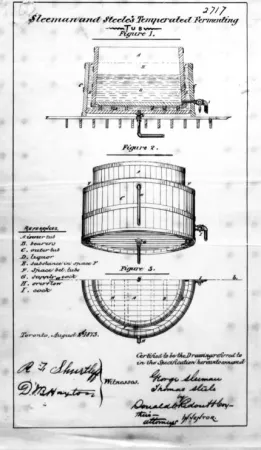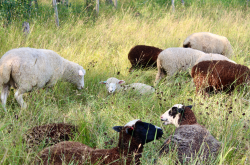The Temperated Fermenting Tub, 1874
This article was originally written and submitted as part of a Canada 150 Project, the Innovation Storybook, to crowdsource stories of Canadian innovation with partners across Canada. The content has since been migrated to Ingenium’s Channel, a digital hub featuring curated content related to science, technology and innovation.
In 1851, John Sleeman, a brewer originally from Cornwall, England, started the Silver Creek Brewery in Guelph, Ontario, which became one of the most ambitious and successful breweries of the day. In 1859, at the age of 18, his son George became manager of the operation and eventually took over the brewery when his father retired in 1868.
George Sleeman proved to be talented both in business and in the art of brewing. In 1874 George patented his “Temperated Fermenting Tub.” The tub was really two tubs—an inner and an outer—allowing water or another coolant to flow between them. This gave Sleeman more control over the temperature of the beer or liquor in the inner tub and allowed him to make lager. It also saved him labour costs, and he further reduced costs by vertically integrating all aspects of production and distribution. Fueled by Ontario’s growing population, Silver Creek expanded its operations, distributing the brand from Sault Ste. Marie to Quebec, and introducing Canada’s first cream ale. By 1900, Sleeman had opened a second plant in Guelph.
With the establishment of Prohibition in Ontario in 1916, Sleeman’s brewery was dealt a terrible blow. The business was eventually sold and the brand disappeared until 1988, when George’s great-grandson, John, restarted the brewery using the family name, and brewed Sleeman’s Cream Ale using his great-grandfather’s original 19th-century recipe.

















